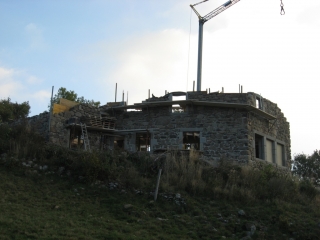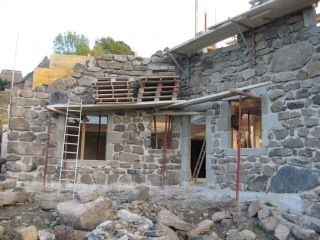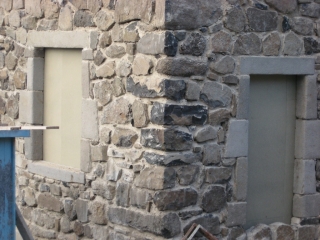On our last visit to France, Ludovic and I stayed in the cottage extension that Michel, Ludovic’s dad, had built as an extension to their house. Michel had sourced the lumber for the cottage from a supplier who had not properly treated the wood for pests. During the night, we could hear the sounds of capricorns slowly eating away at the wood.
What likely happened was that capricorns had already laid their eggs in the wood, and the larvae was eating their way out.
I asked Ludovic how we could avoid this situation with our building, specifically if there was a way to treat the wood in an ecological manner. His response surprised me. He said, as a start, that the trees for the lumber would be cut in accordance to the lunar calendar. Initially I thought he was joking, but he persisted….
As I started my Internet search on this topic, it appears that the practice of farming according to the lunar cycle started with the ancient Romans. Even so, I have not found any source (at least on English websites) how harvesting timber according to the lunar cycle would prevent bug infestations….
Our carpenter, Michel, will be harvesting the timber according to the lunar cycle….
What else are we doing to properly treat the wood? We will be spraying all the lumber with a borax solution. Warm water is used to dilute the borax and increase absorption onto the wood. Some lumber will be treated before installation and some will be treated right after it’s been installed. Typically, two coatings of borax solution will be applied.
The first snow fell last week end. It did not stick to the ground but it marked a clear change in the weather pattern. Temperatures during the day are hovering around 10°C and start falling below zero at night. We may not be able to continue building the stone walls for much longer. Although we switched, three weeks ago, to a cement that was only 90{86faa949d09500cfb2fb8be01edc8582822a5980221f039bd4bbebd1d0646763} lime-based and could withstand slightly lower temperatures, it still cannot be used if the temperatures are consistently below zero at night.
The North facade (the long one with a slanted roof line) is almost done up to the second floor’s ceiling. Once the masons reach that level, they will stop and move on to the South East facade (along the road).
The lintel above the high staircase window has finally been installed. It is hard to see the window on the picture below as it is half hidden by the scaffolding and pallets.
My dad has started closing the windows and doors on the ground floor by installing plywood on the inside of each opening. This will help protect the construction for the winter by blocking as much rain, wind and snow from going inside the house.
The beams and joists between the first and second floor are all installed. One can start to see on the pictures the layout of the entrance hall, the bedroom, the staircase and the mezzanine.
The challenge will be to ensure all the wood is carefully protected while the masons continue to work on the walls.
The construction of the walls around the 2nd floor is now well underway. The area above the dining room is almost done and the walls have reached the level at which the beams and joists for the second floor will come to rest on the walls.
Sadly, we have come to conclusion that there will not be enough time before the cold weather settles to finish the stonework and install the roof. We have made the decision to continue the stonework all the way to the level of the 2nd floor ceiling and then we will stop all work until next Spring. We will need to cover the top of all the walls with plastic tarps to prevent water from penetrating inside the stone walls and creating cracks. All the beams and joists from the first floor will also need to be carefully protected so the snow does not damage them.
As of last week, we have switched from a 100{86faa949d09500cfb2fb8be01edc8582822a5980221f039bd4bbebd1d0646763} lime-based cement to a 80{86faa949d09500cfb2fb8be01edc8582822a5980221f039bd4bbebd1d0646763} lime-based cement which requires less time to cure and can cure at lower temperatures.
We hope that the masons will be able to continue their work for another month but we it will all depend on the weather.










